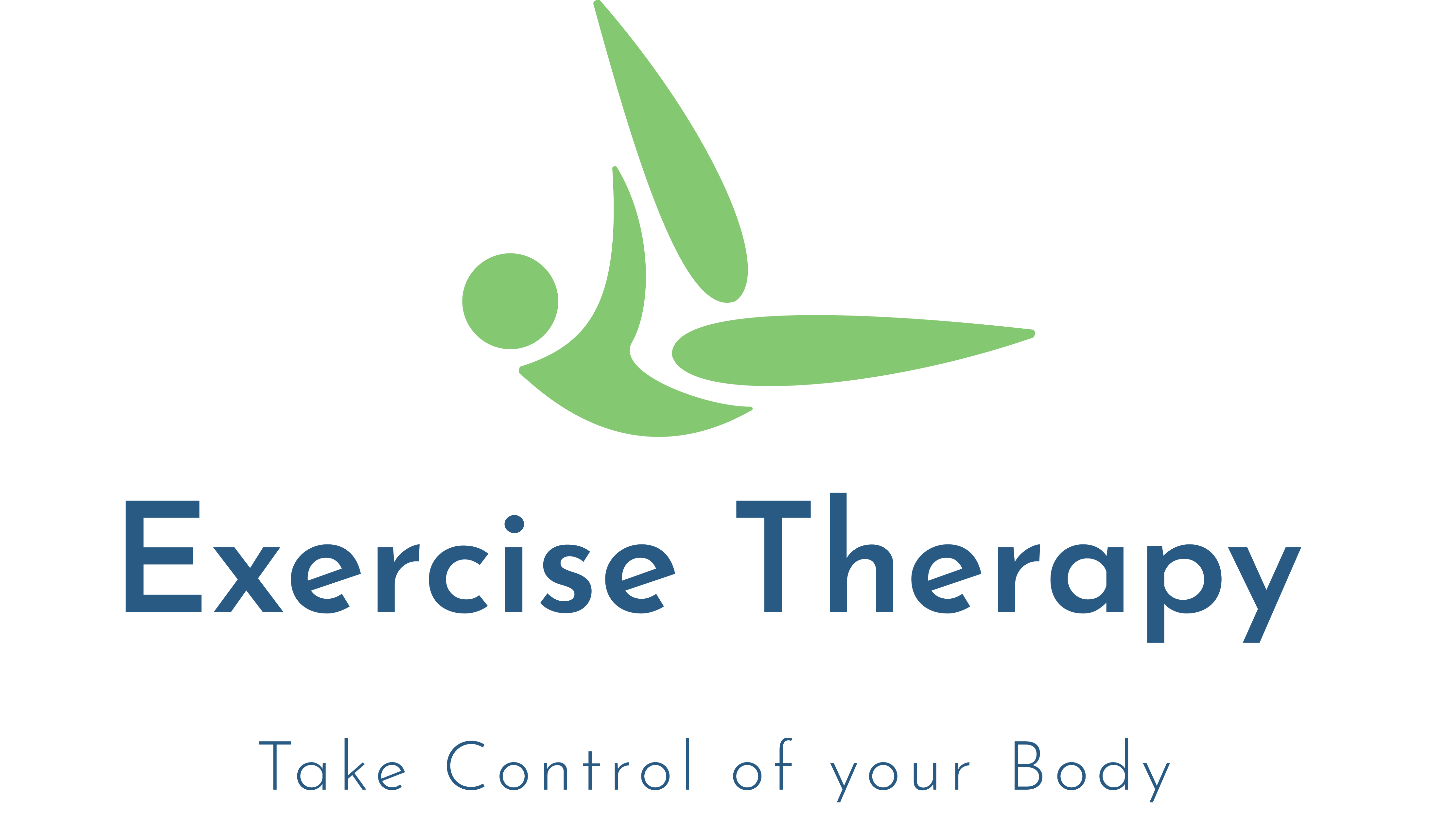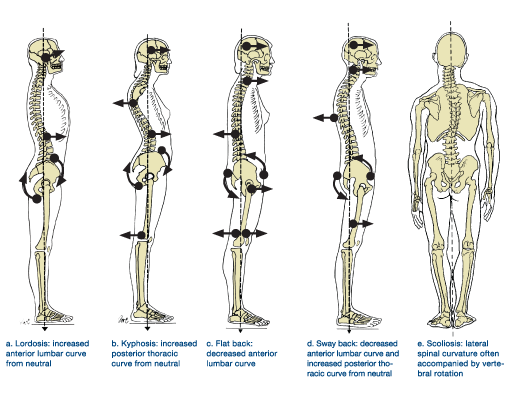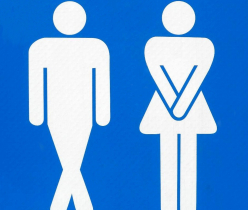So what is a sway back posture type, and how can this affect your body?
Sway back is something that I see a lot when assessing clients and this can have an impact on the knees, hips and lower back. In some clients it can also affect the alignment of the upper body as we compensate for the position of the pelvis.
Typically the pelvis is forward of the central line and the knees are locked or hyper extend ed, this can place load through the knees and ankles. The muscles at the front of the hips become long and weak as do the core muscles.
ed, this can place load through the knees and ankles. The muscles at the front of the hips become long and weak as do the core muscles.
The muscles of the buttocks become lazy and inactive.
Clients with this posture type also tend to experience more lower back pain as these muscles become tight and mobility is reduced.
You can see from the diagram (d) that as you move up the spine clients can then have an increased curve in their thoracic spine (middle of the back). The head then tends to move forwards making the muscles in the neck short and tight.
Take a look in the mirror or ask a friend or family member to look as see if you have a posture similar to this, if you do here is how to bring you back into alignment.
Step 1: Stand in front of a mirror with feet hip width apart preferably without shoes
Step 2: Soften the knees ensuring that they are not locked
Step 3: Bring your weight slightly back so you have equal pressure through the heel, the ball of the foot under the big toe and under the last (little) toe
Step 4: Bring your pelvis into neutral
Place on hand on your lower tummy and the other in the small of the back. Imagine you pelvis is a bucket filled with water, tilt you pelvis under and imagine water spilling over your back hand and then tilt forwards and imagine water spilling over your front hand. Make these tilts smaller and smaller until you are not spilling any water bringing your pelvis is into neutral
Step 5: Engage the core by gently pulling the tummy button towards the spine and drawing up the lower abdominal muscles. Be careful not to let the ribs lift
Step 6: Stabilise the shoulders. Imagine you have a helium balloon between your shoulder blades, draw the shoulders up towards the ears and gently roll the shoulders back as if gripping the balloon lightly. Ensure that you don’t extend or arch the chest or the lower back. Draw the shoulder blades down in the back as if bringing the balloon to the middle of the back.
Make sure that your breathe!
Become aware of how your body feels and if any pressure of discomfort reduces in your new position. Practice on a regular basis



